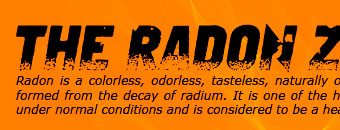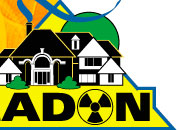 |
 |
 |
||||
|
||||||
| Call: 417-844-0942 | ||||||
|
20 Years after Radon Abatement Act, Exposure Getting Worse Nearly two decades after passage of the 1988 Indoor Radon Abatement Act (IRAA), exposure to indoor radon continues to grow. Efforts to reduce exposure through mitigation or building with radon-resistant new construction have not kept pace, according to a new report from EPA's Office of Inspector General (OIG). Of 6.7 million new single-family detached homes built nationwide between 2001 and 2005, only about 469,000 incorporated radon-resistant features. Of 76.1 million existing single-family homes in the United States in 2005, only about 2.1 million had radon-reducing features in place. The IRAA established the goal that indoor air should be as free of radon as outdoor air. Since 1988, EPA has administered a voluntary program to reduce exposure to indoor radon by promoting awareness, testing, installation of radon mitigation systems in existing homes, and use of radon-resistant new construction techniques. Still, building codes in some areas do not require new homes to be built with radon-resistant new construction. Much of the progress made in reducing exposure has occurred as a result of real estate transactions. In those cases, a buyer, seller, mortgage lender, and/or real estate agent requested that a home be tested. Some states and localities do not require testing or the disclosure of test results during real estate transactions. The OIG says the radon program is not achieving greater results for several reasons: Added expense represents a disincentive for builders to use radon-resistant new construction. The OIG says opportunities exist within the federal community to substantially increase the number of homes tested and mitigated for radon. EPA has not decided how to use all the authorities or tools available to it to achieve the Act's goals, and, meanwhile, it has not been reporting program results in relation to homes at risk in its performance reporting. In its own report, OIG recommended that EPA develop a strategy for achieving the long-term goal of the IRAA that considered using the authorities authorized by Congress or explain its alternative strategy, which it agreed to do. OIG also recommended that EPA identify limitations to meeting the goal to Congress. EPA responded that it does not believe the IRAA goal is achievable. While EPA agrees that the problem of radon exposure gets worse each year, it did not agree to notify Congress that the goal set by the statute is unachievable. OIG considers this issue open and unresolved. OIG also recommended improvements to how EPA measures and reports program results, which it agreed to do. |
|
|||||